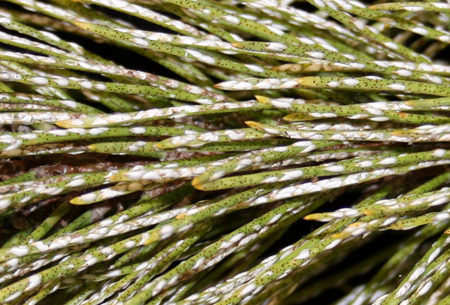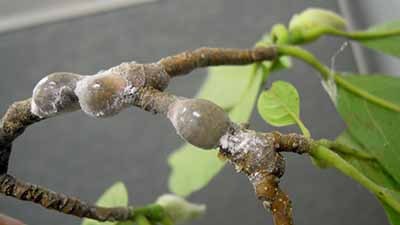#stylet of mite
Explore tagged Tumblr posts
Text

The Science Research Notebooks of S. Sunkavally, p 594.
#stylet of mite#leaf curling#viral diseases of plants#insect vector#smut spores#ergot of cereals#overwintering of insects#pyrethrin#caffeine#streptozotocin#benzoic acid#metronidazole#Aspergillus#aflatoxin#yeast spot#soyabean
0 notes
Text
Types Of Mites, What Diseases Do They Cause?
Mites are among the most feared pests in organic agriculture. Their resistance, voracity, capacity for reproduction and dispersal make these animals serious problems for production. Knowing them better and the diseases they cause is essential to understand how to combat them.
What Are Mites?
The mite name actually encompasses numerous species of arthropod arachnids condensed under one subclass: Acari. Mites are cosmopolitan parasites that affect many living things, both animals and plants. As for the mites that cause pests, two large groups encompass them.
Eriophyids are the least common mites. They are 0.1 to 0.2 millimetres in size, whitish in colour, although they are generally not seen on the plant. Eriophyids eat using five very small stylets with which they inject saliva. The problem with these mites is not the damage they cause to the plant; instead, they are virus vectors.
Tetranychids are the most characteristic mites, with chelicerae (like spiders) through which they feed. They are suckers larger than Eriophyids and about 0.5 mm in size. They tend to form very showy spider webs and colonies. The damage they produce is due to the emptying of the cellular content with which they feed.
What Diseases Do Mites Cause?
There are many species of mites in both groups: about 3,600 in the eriophyid and about 1,200 among the tetranychids. Of all these, only a few represent a dangerous pest for the crop, causing well-characterized diseases.
Wonder Mite
A type of disease is caused by Aceria sheldoni, the wonder mite, an eriophyid. This affects citrus fruits, where it causes damage to the buds and produces very spectacular and rare fruit malformations (where its name comes from). A "double leaflet" is observed in the leaves, which makes it appear that the leaves are compound.
Olive Erinosis
Like the wonder mite, Aceria oleae is an eriophyid that attacks the fruit of the olive tree, the olive, and reduces it. Its action is appreciated by darker spots on the upper surface and a rough underside on the leaves. Remember that the mite is not seen with the naked eye, commonly. The plague usually shows its face in May.
Vine Erinosis
Produced by Colomerus Vitis and/or Eriophyes Vitis, vine erinosis causes bulges on the upper part of the leaves. At the same time, white markings can be seen on the underside of these bulges. Again, the mite is not easily visible, but these signs are very easy to spot.
Other Erinosis
Although they are not common, as we said, eriophyids tend to show their faces on the leaves of fruit trees. They do this with the formation of galls, malformation of fruits and leaf discolourations, but without the mites easily showing their faces due to their small size.
Red Spider
One of the most well-known and widespread mites is the red spider, Tetranychus Urticae, a tetranych that is readily appreciated for its massive colonization of the plant.
It is mainly seen on the underside of the leaves and forms an abundant web, more subtle than that of spiders. It produces yellow pits in citrus fruits and yellow spots on the leaves, and necrosis in a wide variety of plant species. The lemon also produces what is known as a lemon moustache, which consists of a dark spot on the vertices.
Fruit Spider
Panonychus Ulmi, also called the red fruit spider, is one of the mites with the highest incidence and attacks all types of species without discrimination. Their larvae appear in spring and are located on the underside of the leaves, producing leaden and brown discolourations on the leaves, which end up drying. They also form cobwebs, which will be easily seen on the leaves, especially on young buds and stems.
Tetranychid Mite Pests In General
As we said, they all have similar characteristics. Stains and drying of some branches begin to appear on the tree. Little by little, the plant loses vigour and stops its growth. At this point, it is easy to detect the pest due to the high number of mites, which will have formed colonies, and their cobwebs will be clearly visible throughout the plant.
1 note
·
View note
Photo


SCALE INSECTS
To the untrained eye, a tree or shrub may look unhealthy or unsightly for no apparent reason. Upon closer inspection however, the culprit may be present in plain sight.
Scales are tiny insects that feed on plant sap, and certain species of scale may injure plants. In large numbers, scales may cause significant damage to trees or shrubs if left untreated. Because of their miniscule size, these insects may go unnoticed until it may be too late to revive a landscape plant. Monitoring visits are important in this regard, as technicians will visit customer landscapes with the changing seasons in order to be on the lookout for cryptic threats such as these.
There are two main types of scales, armored scales and soft scales. Armored scales produce a waxy, hard coating overtop of their bodies acting like a shell, protecting the insect from the environment. Euonymus scale, pine needle scale and oystershell sales are a few examples of armored scale. Armored scales can have several generations a year and usually spend the winter as eggs, first instar nymphs (first growth stage), or as a mature female (depending on species and location). Eggs usually hatch late May or early June. Once scales hatch from their eggs they are called crawlers. Unlike the adult scales, the crawlers are mobile insects which travel to the leaves to feed during the summer and migrate to the twig before the leaves drop in the fall. Using a long mouthpart called a stylet, which is usually 6 to 8 times as long as the insect itself, the straw-like stylet is inserted into the plant tissue to feed on sap. Once the crawlers produce the waxy, armored coating, they lose their legs and become immobile. If a plant is heavily infested with scale, not enough sap is left for the plant to maintain proper vigor for growing and the plant will begin to decline.
Soft scales, appropriately named are soft compared to armored scale, they do not produce a shell-like coating, merely a waxy, penetrable coating. They are generally larger in size than armored scales. A few examples of soft scales are cottony maple scale, magnolia scale and lecanium scale. Soft scales usually have only one generation per year and generally spend the winter as second instar nymphs (second growth stage), and remain attached to twigs. They complete their development in the spring when the females lay eggs. Soft scale eggs hatch later in the year than armored scales, usually in late June or early July. When soft scales feed on plant sap, also with a stylet, they produce a sugary liquid called honeydew. The honeydew attracts ants and flies. If scales are in large in number, there can be so many wounds on the tree or shrub that sap can drip, creating sticky sidewalks and landscapes. A black fungus called sooty mold eventually also sets in to feed on the honeydew.
Here at Integrity Tree Services, we have had many phone calls from Tree & Shrub Care customers regarding their trees or shrubs looking unhealthy. Occasionally, upon inspection the culprit for the plants’ decline is scale. The significance in the scale infestation depends on the species of scale, the size of the population, the species and value of the plant the scales are affecting as well as other environmental factors. Not all scales are harmful to landscape plants. Scales usually feed on plants that are already stressed, however, it is perfectly normal for a tree or shrub in the landscape to house some scale. Scales have many predators in the landscape such as parasitic wasps, ants, lacewings, ladybugs, beetles and mites; an abundance of predators may not warrant chemical action. Sometimes, if simply a branch is infested, just pruning the branch can be enough to prevent infestation.
If a landscape plant has significant value, is heavily infested with scale and if natural predators are not abundant in the landscape, chemical control can help fend off scales. If you’re suspicious that scales are a reason for the decline of you tree or shrub, please feel free to call us to set up a free estimate with one of our certified arborists. Call (616) 301-1300 extension 118 to schedule an appointment. We can help determine if scale is present, if it is harmful to your landscape and if chemical treatments could be beneficial to the health of your plant. As usual, the easiest method to prevent infestation is prevention. Keeping your landscape plants healthy with proper irrigation and maintaining optimum, growing conditions can make your plants more resistant to insect infestation.
0 notes